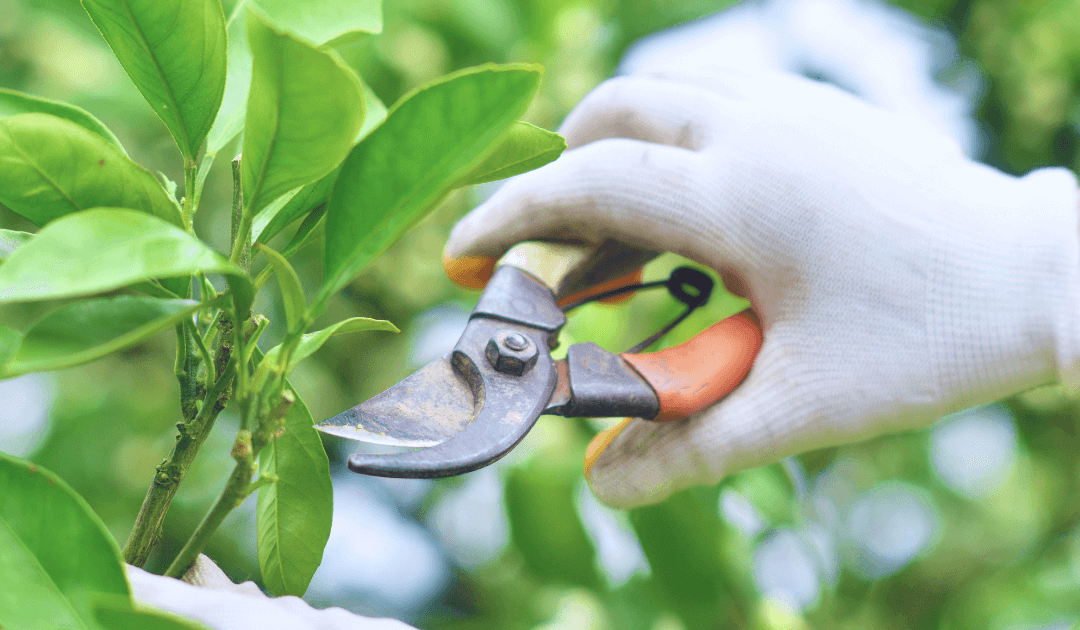Among various tree maintenance activities, tree pruning stands out as a practice that not only enhances the aesthetics of your trees but also boosts their overall health. Plus, it is well known that a well-pruned tree can add more value to your property.
But it’s not just aesthetics and property value that make tree pruning a must-do activity. Pruning is essential for the safety of your property and the people living in it. Dead or decaying branches can pose a potential threat, especially during storms or heavy winds. By removing these hazardous limbs, you are not only protecting your family but also maintaining the structural integrity of your home.
Moreover, regular pruning can prevent the spread of diseases and pests, ensuring that your trees stay healthy and strong for years. So, let’s discuss what is tree pruning and the essential maintenance practices when pruning your trees.
Understanding Tree Pruning
When you think of tree pruning, imagine it as a health check-up for trees. It’s not just about lopping off unwanted tree branches or trimming overgrown ones. It’s about understanding the tree’s structure, identifying weak & broken branches, and using proper methods to maintain its health.
Pruning can be done on both young and mature trees. However, the approach differs. Young trees need pruning to establish a strong structure, while older trees require it to maintain their health and extend their lifespan. It’s important to note that improper pruning can cause permanent damage to your trees, so it’s best to hire a professional arborist for the job rather than doing it yourself.
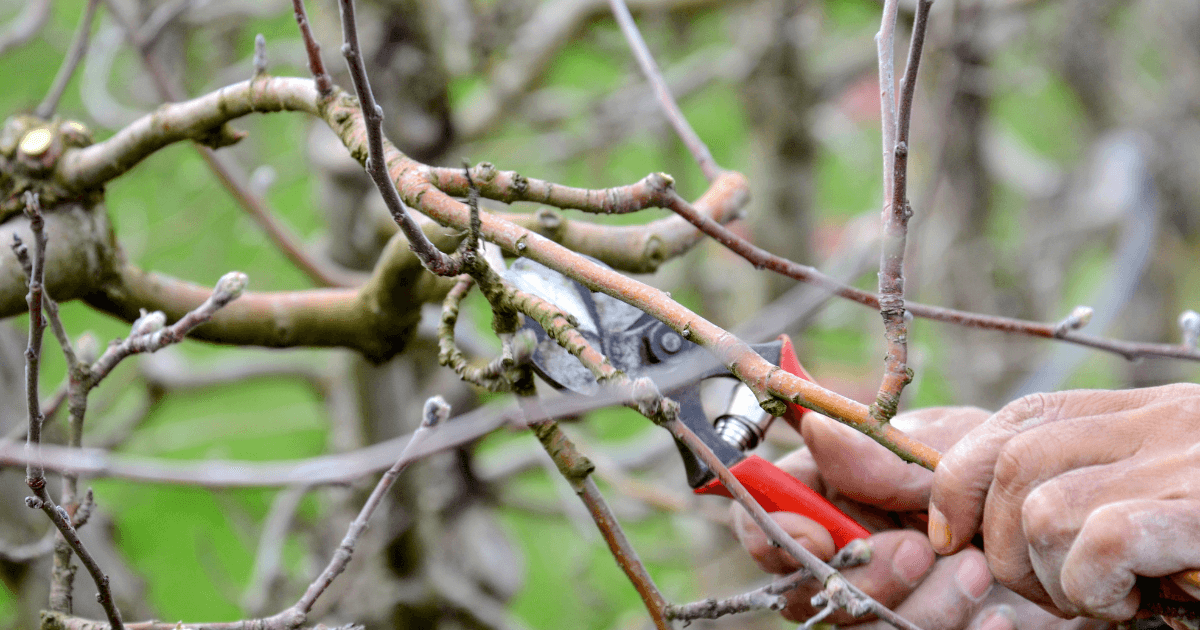
Reasons for Tree Pruning
Properly pruned trees can live longer than unpruned ones. Thus, tree pruning isn’t just about maintaining a pleasing appearance.
- The top reason for tree pruning is health. Dead branches, diseased limbs, and loose branches can threaten your tree’s well-being. Removing these parts helps prevent diseases from spreading and enhances the overall health of the tree.
- Another reason is safety. Overgrown branches may pose a risk by growing into power lines or breaking free due to wind or weight. By trimming these branches, you reduce the chance of property damage or injury.
- Lastly, tree pruning encourages healthy growth and productivity, especially in fruit trees. Pruning stimulates the growth of new, healthy branches and increases fruit production.
Benefits of Pruning
Pruning comes with a host of benefits for your trees:
- Improves Tree Health: Pruning removes diseased or insect-infested wood, preventing problems from spreading.
- Enhances Tree Structure: Pruning increases air circulation and allows more sunlight penetration, fostering healthier trees.
- Boosts Fruit Production: For fruit trees, pruning can significantly increase the size and quantity of the crop.
- Aesthetic Appeal: Pruning helps maintain the natural form of the tree, enhancing its overall appearance.
Types of Pruning
When it comes to pruning, understanding the different types is key. Here are some common types you should know:
Crown Raising
Crown raising involves removing lower branches from a tree to provide clearance for pedestrians, vehicles, and buildings. This type of pruning helps maintain the health of the tree while also ensuring safety.
Crown Cleaning
This pruning involves removing dead, loose, and diseased & unwanted branches from the tree’s crown. Crown cleaning helps improve structure and promotes healthy growth.
Crown Reduction
Crown reduction is used to reduce the size or height of the tree. This is often done to prevent trees from growing into power lines or to reduce the risk of branches breaking free.
Crown Thinning
Crown thinning involves removing selective branches to increase air circulation and sunlight penetration. This type of pruning can help improve the health of the tree and promote new growth.
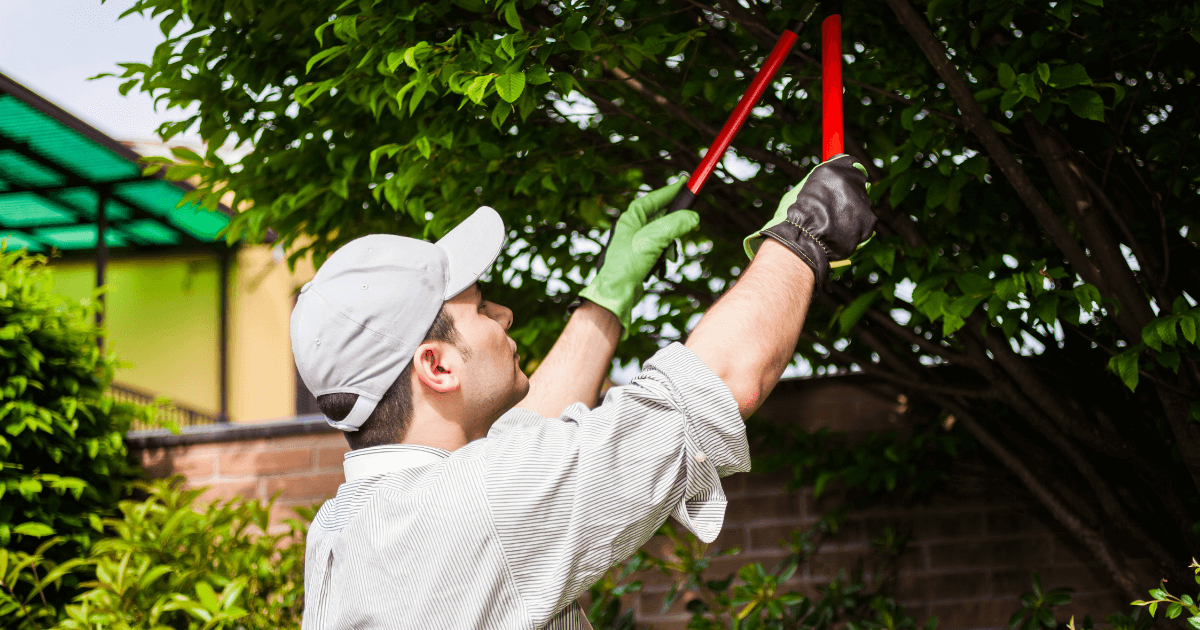
Essential Tree Pruning Tips
Curious about what is tree pruning? Here are ten crucial tips to keep in mind when pruning your trees:
- Never Over-prune: Removing more than 25% of a tree’s branches can lead to stress and potential health issues.
- Prune During Dormant Season: Most pruning should be done in the late winter or early spring. However, dead, damaged, or diseased branches should be removed as soon as possible.
- Use the Right Tools: Always use sharp, clean pruning or lopping shears for smaller branches and a pruning saw for larger limbs.
- Avoid Topping: Topping, or cutting off the top of a tree, can lead to uneven growth and weak limbs. Instead, opt for crown reduction or raising.
- Prune Young Trees Carefully: For young trees, focus on improving their structure by removing unwanted growth and promoting a strong central stem.
- Hire a Certified Arborist: If you’re unsure, it’s always best to hire a professional. Look for certified arborists who know the right pruning methods.
- Be Mindful of Your Safety: Always wear protective gear, such as gloves and safety glasses, when pruning. And never attempt to prune trees near power lines.
- Know Your Tree Species: Different trees require different pruning methods. Research before pruning to ensure you use the right technique for your tree.
- Don’t use paint: Contrary to popular belief, using paint on pruning cuts does not help healing. Let the tree heal naturally.
- Prune with Purpose: Have a specific goal in mind when pruning. Whether it’s for health, safety, or aesthetics, keeping your purpose in mind will help you make the right pruning decisions.
Timing and Frequency
When it comes to pruning trees, timing is crucial. Most pruning should happen during the dormant season, typically in late winter or early spring. During this time, trees are less prone to stress, and new growth can heal the wounds caused by pruning. However, for spring flowering trees, pruning immediately after blooming helps maintain their blooming cycle.
But remember, dead, damaged, or diseased branches should be removed as soon as they’re noticed, no matter what time of year it is. This immediate action prevents the spread of disease and promotes the tree’s health.
As for frequency, it depends on the type and health of the tree. Young trees might need more frequent pruning to establish a strong structure, while older trees require less frequent but regular check-ups.
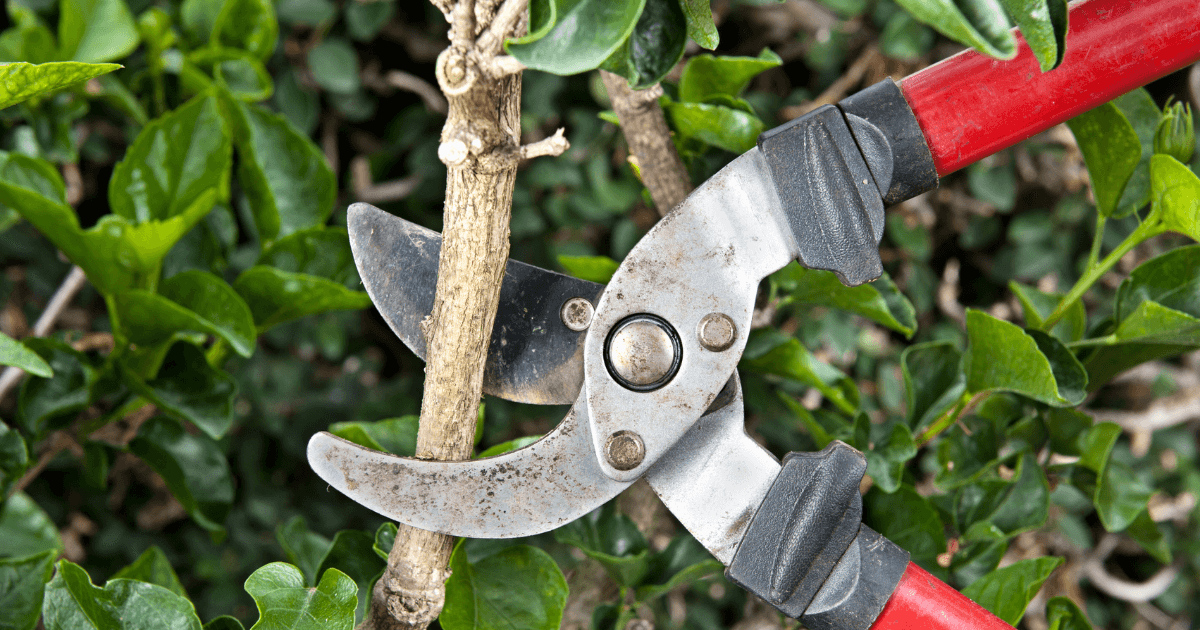
Pruning Tools and Equipment
Having the right tools is essential for effective pruning. Here’s a list of common pruning tools you might need:
- Hand Pruners (Pruning Shears): Ideal for cutting small branches and twigs up to 3/4 inch in diameter.
- Lopping Shears: These are similar to hand pruners but have long handles for reaching higher branches and cutting thicker ones.
- Pruning Saws: Designed for cutting larger branches too big for lopping shears. They come in different sizes based on the thickness of the branches.
- Pole Pruners: These tools have a saw or a cutter mounted on a pole, ideal for cutting higher branches without needing a ladder.
- Hedge Shears: These are used for shaping hedges and trimming small, thin branches.
Note – Always keep your tools clean and sharp. Dull tools can damage the tree and leave it vulnerable to diseases.
Pruning Techniques
These are some common pruning techniques that can help maintain the health of your trees.
Removing Dead Branches
Dead branches can be an eyesore and a potential hazard. Regularly inspect your trees and prune these branches to maintain tree health and reduce risks.
Trimming Overgrown Branches
Overgrown branches can obstruct views, interfere with power lines, and pose safety risks. Trim these branches to keep your trees in check and prevent them from causing problems.
Pruning for Shape
Pruning helps sustain the natural form of your trees. By removing unwanted growth and promoting shapely growth, you can enhance their aesthetic appeal.
Pruning for Health
Remove diseased branches promptly to prevent the spread of disease. Also, prune branches that cross or rub against each other as they can cause wounds and invite pests.
Thinning for Light and Air
By selectively removing weak branches, you can improve air circulation and sunlight penetration. This promotes healthy growth and reduces the risk of disease.
Safety Considerations
Pruning, while beneficial, can be dangerous if not done properly. Here are some safety considerations to keep in mind:
- Avoid Power Lines: Never try to prune trees near power lines yourself. It’s best to call professionals or your utility company for this.
- Use Proper Tools: Always use sharp, clean tools suitable for the job. Dull or dirty tools can cause injuries or spread disease.
- Wear Protective Gear: Always wear safety glasses, gloves, and sturdy footwear when pruning. If you’re working on large trees or using power tools, consider wearing a hard hat and a safety harness.
- Watch Out for Falling Branches: Be aware of your surroundings when cutting branches to avoid getting hit by falling debris.
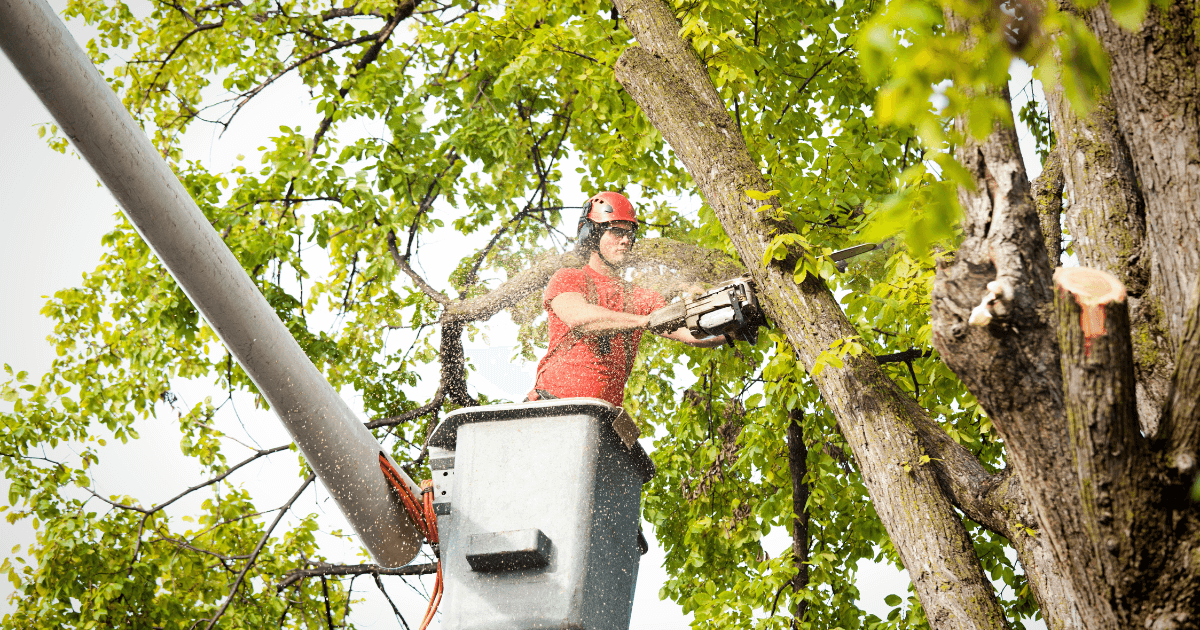
When to Consult a Professional
While most homeowners can manage common pruning tasks, there are times when it’s best to call in a certified arborist. Here are a few situations where professional help is advised:
- Large Trees: If you’re dealing with large trees or large branches, it’s safer to hire professionals. They have the right equipment and expertise to handle large limbs safely.
- Near Power Lines: Any tree trimming near power lines should be handled by professionals. It’s dangerous and typically against regulations for untrained individuals to prune around power lines.
- Diseased Trees: If you suspect your tree is diseased, consult a professional. They can diagnose the issue accurately and suggest appropriate pruning methods to maintain plant health.
- Improper Pruning: If previous improper pruning has caused weak limbs, uneven growth, or other issues, a professional can help correct these problems and improve tree structure.
Conclusion
So, what is tree pruning? It is the practice of selectively removing specific branches to improve the tree’s structure, health, and appearance. Whether you have fruit trees, spring flowering trees, or mature trees, proper pruning techniques are vital.
However, it’s important to note that not all pruning tasks can or should be done as a DIY project. For larger trees, situations involving power lines, or complex issues, it’s best to seek the assistance of a certified arborist. They possess the necessary training and expertise to ensure safe and effective pruning, promoting the health and happiness of your trees – and you.

